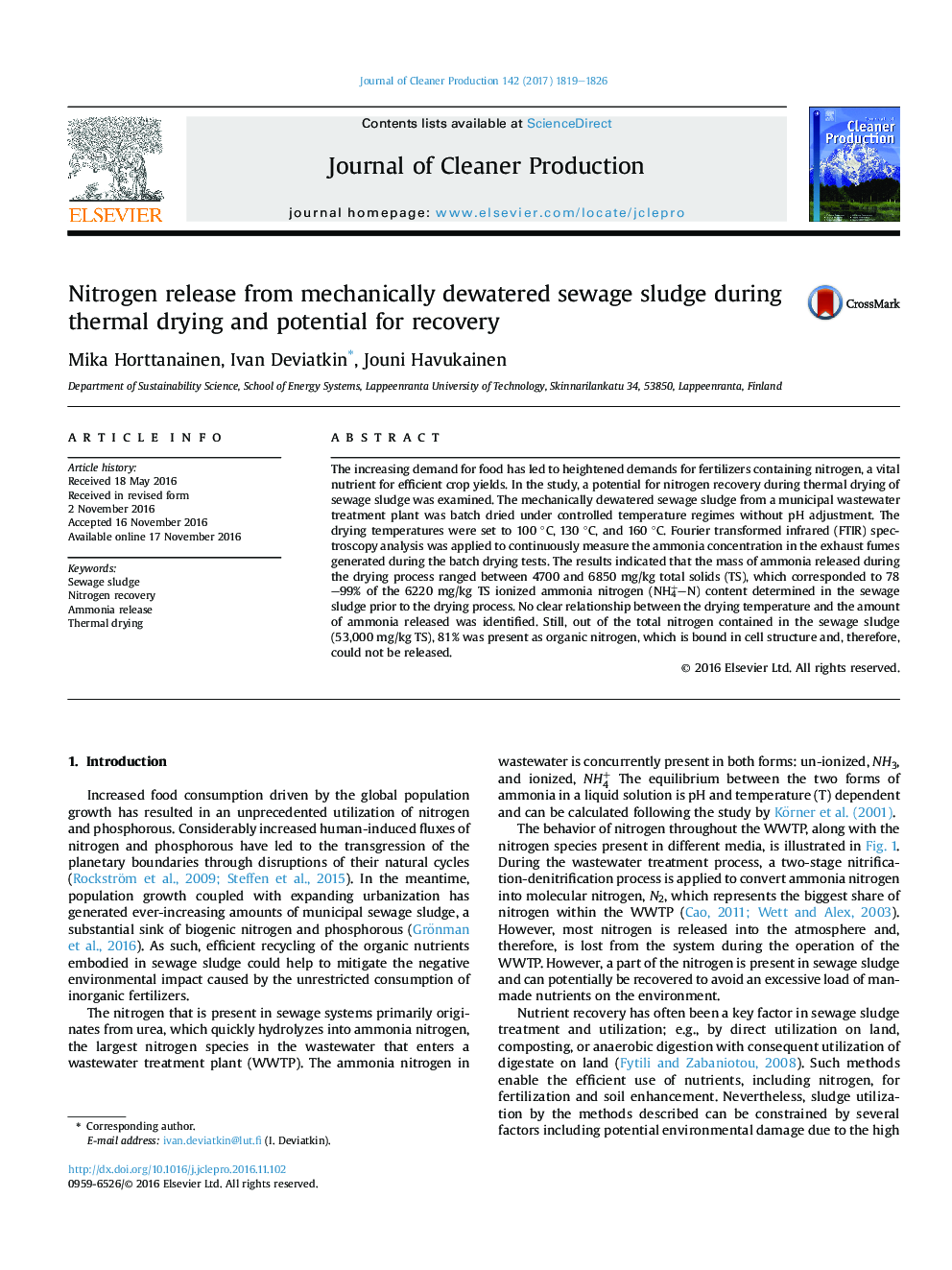| کد مقاله | کد نشریه | سال انتشار | مقاله انگلیسی | نسخه تمام متن |
|---|---|---|---|---|
| 5480355 | 1399315 | 2017 | 8 صفحه PDF | دانلود رایگان |
- Sewage sludge contained 53,000Â mg/kg TS of nitrogen, of which 19% was soluble and 81% was organic.
- Out of the soluble nitrogen (9980Â mg/kg TS), 62% was ionized ammonia while the rest was unionized ammonia primarily.
- During the thermal drying process, 78-99% of ionized ammonia contained in the sludge was released as ammonia gas.
- Increased temperature was proven to be a significant factor affecting ammonia release without pH adjustment.
The increasing demand for food has led to heightened demands for fertilizers containing nitrogen, a vital nutrient for efficient crop yields. In the study, a potential for nitrogen recovery during thermal drying of sewage sludge was examined. The mechanically dewatered sewage sludge from a municipal wastewater treatment plant was batch dried under controlled temperature regimes without pH adjustment. The drying temperatures were set to 100 °C, 130 °C, and 160 °C. Fourier transformed infrared (FTIR) spectroscopy analysis was applied to continuously measure the ammonia concentration in the exhaust fumes generated during the batch drying tests. The results indicated that the mass of ammonia released during the drying process ranged between 4700 and 6850 mg/kg total solids (TS), which corresponded to 78-99% of the 6220 mg/kg TS ionized ammonia nitrogen (NH4+N) content determined in the sewage sludge prior to the drying process. No clear relationship between the drying temperature and the amount of ammonia released was identified. Still, out of the total nitrogen contained in the sewage sludge (53,000 mg/kg TS), 81% was present as organic nitrogen, which is bound in cell structure and, therefore, could not be released.
Journal: Journal of Cleaner Production - Volume 142, Part 4, 20 January 2017, Pages 1819-1826
